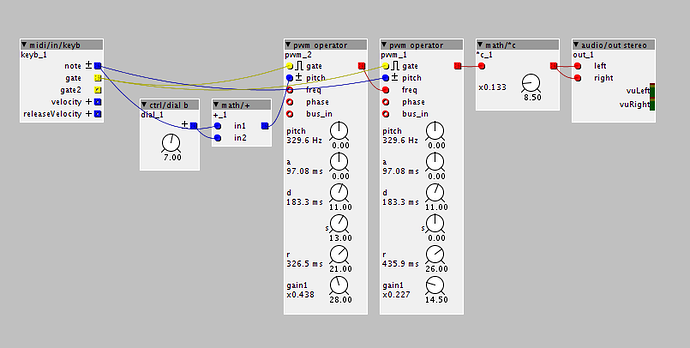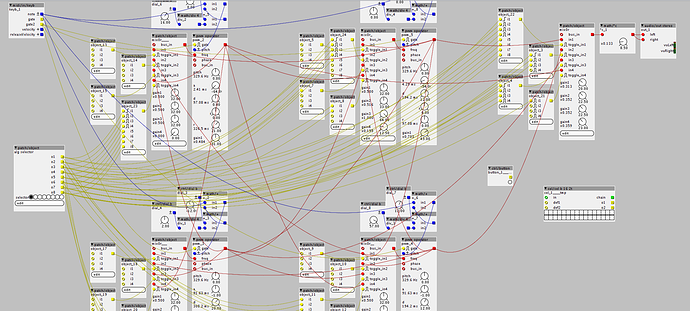Hi guys, here's a patch I made during the process of trying to teach myself what frequency modulation is. It sounds pretty abrasive, but not in a bad way in my opinion. It's a 5 operator algorithm with 2 carriers and 3 modulators. I'm trying to implement linear FM here by adding small values to the frequency generated by the keyboard object before it is passed to the operators. the 'pwm operator' object is basically just a sine osc, vca, adsr and mixer smooshed into one component to make the patch more readable and tidy.
I'm pretty new to this so if anyone has some tips on doing FM, any recommended reading I would greatly appreciate it.
5opFMbass.axp (9.0 KB)
pwm operator.axo (2.1 KB)


